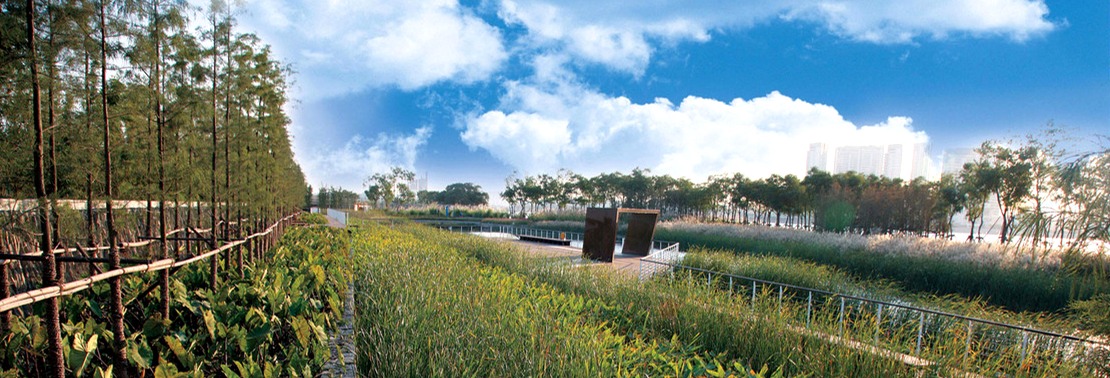Joe Myers of World Economic Forum writes:
The idea of a sponge city is simple – rather than using concrete to channel away rainwater, you work with nature to absorb, clean and use the water. “Floods are not enemies,” explains Professor Kongjian Yu. “We can make friends with floods. We can make friends with water.” What we have done is totally wrong, he says.
Kongjian Yu is a Chinese landscape architect, professor for landscape architecture at Peking University and the founder of the planning office Turenscape in Beijing.
He returned to China after studying landscape architecture at Harvard University in the US, determined to tackle one of the biggest problems facing cities. His solution was to work with nature rather than against it.
Sponge cities also include green walls and roofs, permeable pavements and green buildings.
The Sponge City indicates a particular type of city that does not act like an impermeable system not allowing any water to filter through the ground, but, more like a sponge, actually absorbs the rain water, which is then naturally filtered by the soil and allowed to reach into the urban aquifers. This allows for the extraction of water from the ground through urban or peri-urban wells. This water can be easily treated and used for the city water supply.
Read more: This man is turning cities into giant sponges to save lives
 Greenroofs.comConnecting the Planet + Living Architecture
Greenroofs.comConnecting the Planet + Living Architecture










Roja Ramani Gavara
This is a very interesting concept and a great invention. I am curious to know what is this material made of which is acting like a sponge to absorb all the water?
Richa K.
It does not mean a literal sponge here but a system of landscapes where low lying and permeable ground is provided to the water to hold and seep. Ofcourse, more details go into creating the surface of this ground and entire connected system, but on a broader level, hope it solves your curiosity.